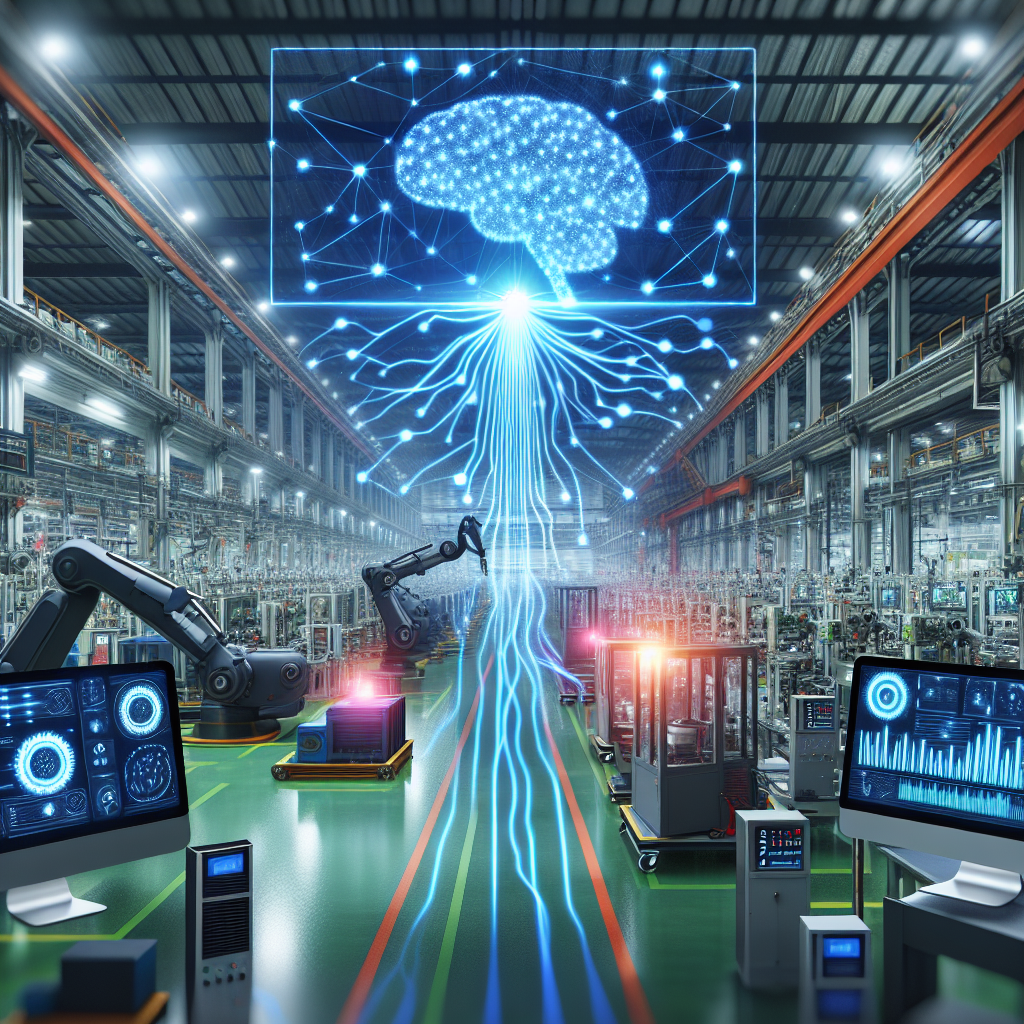In the world of manufacturing, maximizing efficiency is crucial to staying competitive in today’s fast-paced market. One way to achieve this is through the use of Overall Equipment Effectiveness (OEE) monitoring, a key performance indicator that measures the efficiency of a manufacturing process. By monitoring OEE in real-time, manufacturers can identify and address issues as they arise, leading to increased productivity and reduced downtime.
Traditionally, OEE monitoring has been a manual and time-consuming process, requiring operators to collect data, analyze it, and make decisions based on the results. However, with the advancements in artificial intelligence (AI) technology, manufacturers can now leverage AI to automate this process and provide real-time insights into their operations.
Using AI for real-time OEE monitoring in manufacturing allows for continuous monitoring of key performance indicators, such as availability, performance, and quality, across all stages of the production process. By analyzing data from sensors, machines, and other sources in real-time, AI can detect issues and inefficiencies as they occur, allowing operators to take immediate action to resolve them.
One of the key benefits of using AI for real-time OEE monitoring is the ability to predict and prevent equipment failures before they occur. By analyzing historical data and patterns, AI can identify potential issues and alert operators to take proactive measures to prevent downtime. This predictive maintenance approach can help manufacturers avoid costly repairs and unplanned downtime, leading to increased productivity and cost savings.
Another advantage of using AI for real-time OEE monitoring is the ability to optimize production schedules and resource allocation. By analyzing real-time data, AI can identify bottlenecks, inefficiencies, and opportunities for improvement in the production process. This allows manufacturers to make data-driven decisions to optimize their operations and maximize efficiency.
Furthermore, AI can also help manufacturers improve product quality by identifying and addressing issues in real-time. By analyzing data from sensors and machines, AI can detect deviations from quality standards and alert operators to take corrective actions. This proactive approach to quality control can help manufacturers reduce defects and rework, leading to higher customer satisfaction and reduced costs.
Overall, using AI for real-time OEE monitoring in manufacturing can provide manufacturers with valuable insights into their operations, leading to increased productivity, reduced downtime, and improved quality. By automating the monitoring process and leveraging AI technology, manufacturers can stay ahead of the competition and drive continuous improvement in their operations.
FAQs:
Q: How does AI collect data for real-time OEE monitoring?
A: AI collects data from various sources, such as sensors, machines, and other connected devices, in real-time. This data is then analyzed and processed to provide insights into the efficiency of the manufacturing process.
Q: Can AI predict equipment failures?
A: Yes, AI can predict equipment failures by analyzing historical data and patterns to identify potential issues before they occur. This allows operators to take proactive measures to prevent downtime and costly repairs.
Q: How does AI optimize production schedules?
A: AI optimizes production schedules by analyzing real-time data to identify bottlenecks, inefficiencies, and opportunities for improvement in the production process. This allows manufacturers to make data-driven decisions to maximize efficiency.
Q: How does AI improve product quality?
A: AI improves product quality by analyzing data from sensors and machines to detect deviations from quality standards. This allows operators to take corrective actions in real-time to reduce defects and rework.
Q: What are the benefits of using AI for real-time OEE monitoring?
A: The benefits of using AI for real-time OEE monitoring include increased productivity, reduced downtime, improved quality, and cost savings. By automating the monitoring process and leveraging AI technology, manufacturers can drive continuous improvement in their operations.

